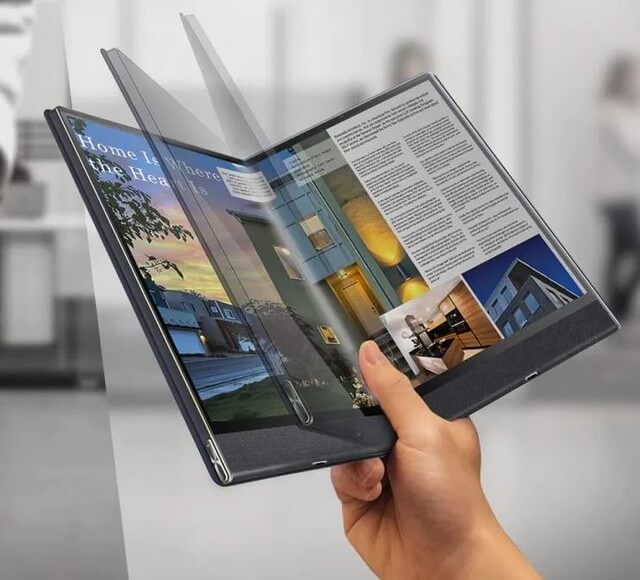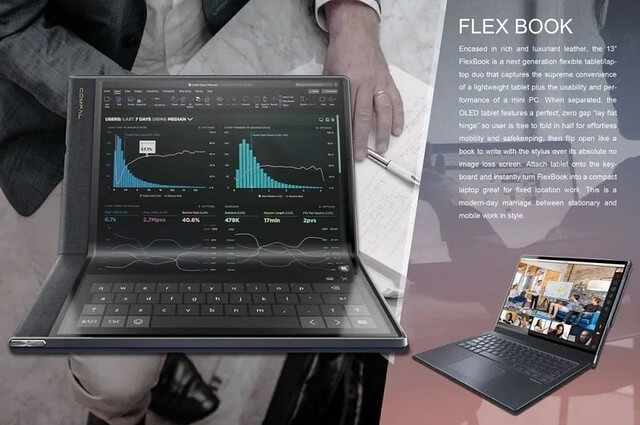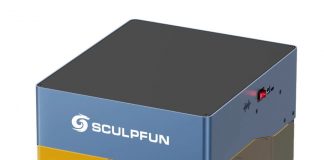The Compal Flex Book offers a 13.3 inch diagonal screen in portrait mode. Folded in half thanks to a flexible panel, it is divided into two displays which overlap to transform into a traditional portable format. The bottom screen acts as a keyboard while the top screen remains a classic screen.

The Flex book can of course open completely and then transform into a classic 13.3 inch screen or large format tablet. A removable keyboard is designed to be positioned on the bottom screen in order to find a more pleasant physical interface than the touch screen while allowing the 13.3 inch screen to be controlled once deployed and positioned opposite.
The flexible screen could take into account both the calsical capacitive touchscreen but also the active styli. An interesting detail for those looking for a solution that is both compact in portable mode but also capable of offering a beautiful surface for drawing in tablet mode. As presented, the solution would have many advantages.

In addition to these conventional uses of tablet and pseudo-netbook, the device would also be able to behave like a book and could display on two separate screens. That would make the Flex Book a good candidate for porting Windows 10X … if the laptop ever comes out. Which is frankly not won.

A lot of elements lead me to believe that this type of product is difficult to assume for Compal and even more for its partners. This type of product is difficult to envisage as a comfortable model, commercially speaking. The machine will be expensive, very expensive to produce and to guarantee over time. This type of flexible screen with a touch layer and active stylus support is rarely produced. But it is also not very rewarding for a brand to go through an ODM like Compal for this kind of machine. If a manufacturer releases this kind of machine, sold very expensive in general, it is to focus on the technologies it masters. A way to highlight his expertise as a designer and constructor. Going through a third-party company may make sense, but only when the price has settled considerably for this type of machine. When this type of device becomes more common, more banal … which is not yet yet.









